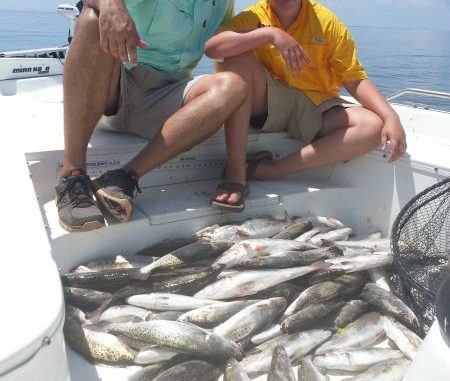
Coastal erosion signals smaller limits
Since 1988, we anglers fishing along the Louisiana coast have operated under regulations allowing us to keep 25 trout and five redfish per day. And that latter limit could have been even more liberal were it not for the redfish wars that ended commercial exploitation of that species.
When those regs were set, we all recognized the edges of the coast were being nibbled away. But by the early 2000s, recognition turned to alarm as the pace of subsidence and erosion picked up and swaths of the coastline sank beneath water. Former Louisiana Sportsman editor Todd Masson wrote a major story on the issue in the August 2003 edition of the magazine, drawing a direct link between the health of the quickly evaporating marshes and that of fish stocks:
“(T)he marsh that serves as the very foundation for (Louisiana’s) staggering fish and game stocks is disappearing, and in many places it’s totally gone. Unless serious, costly and painful steps are taken within the next five years, the Sportsman’s Paradise will become Paradise Lost,” Masson wrote.
Almost 11 years later, little concrete progress has been made toward slowing down the rate of erosion. Sure, freshwater diversions have lowered salinities in areas, but these projects produced not one acre of land. Yep, sand has been dumped here and there — only to wash away when the pumps stopped.
And tropical systems have worsened the problem, tearing out chunks of these marine nurseries.
But no one broached the subject of our liberal fishing regulations until the June meeting of the Louisiana Wildlife and Fisheries Commission, when one commissioner asked about lowering the minimum size limit on reds and another (who has since resigned) had the audacity to merely suggest trout limits in the Big Lake region might need to be lowered. See the story here.
Few will argue against keeping smaller reds, which seem to be under every blade of marsh grass. But it’s the question of trout regulations that points to the future.
OK, so right now speck populations seem fine (although the LDWF has refused to share stock analyses since shortly after the BP oil spill), but we can’t ignore that the situation is changing. The disappearance of the marshes signals the eventual decline of all fish populations dependent upon these wetlands.
It’s going to be interesting to see what the science says — assuming the LDWF actually releases its findings, which is far from a certainty. My bet is the science points to strong fish populations today, so any changes now will be more about preference than need.
But down the road we’ll be forced to make harder decisions out of necessity. And that means we’ll one day have to take more trips to fill our freezers.


